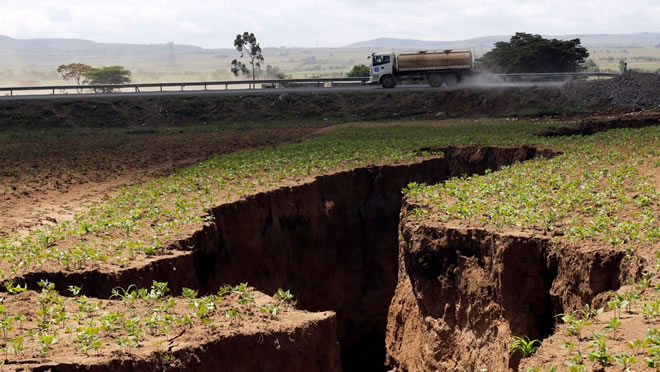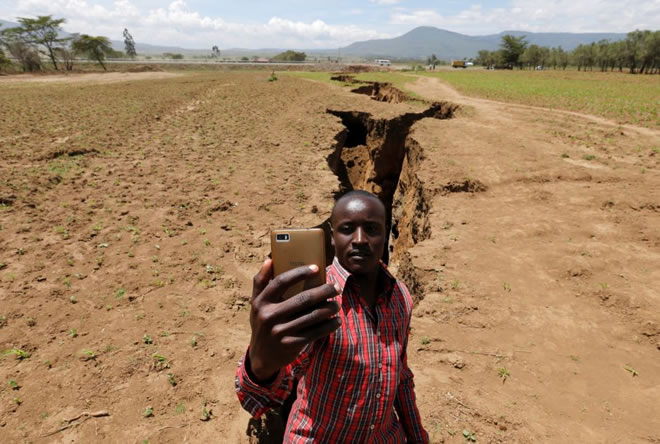
Abdi Latif Dahir
Monday April 2, 2018

Heavy rains caused havoc in Kenya in March, collapsing hospital walls, flooding entire neighborhoods, and closing off major highways. The downpour also exposed a fault line that geologists now say is evidencethat the African continent will split into two over the next tens of millions of years.
The floodwaters created a rift stretching several kilometers near Mai Mahiu town in the Rift Valley, ripping a major highway open and creating a deep gully that sucked in cars and impacted farmers and their homes. Scientists say seismic tremors and tectonic shifts in the region are to blame, with the rains only exacerbating the problem by washing away the surface and exposing the underlying activities.
The East African Rift System (EARS), part of the Great Rift Valley, stretches thousands of kilometers, starting from the Gulf of Aden in the north to Mozambique in the south. The EARS is an actively developing rift, a process that will slowly thin the earth’s lithosphere crust, spread the seafloor, stretch and break the topography through faulting, and eventually break the continent apart. Once this is done, most of Africa will remain on what is known as the Nubian Plate, while Somalia and parts of Kenya, Ethiopia, and Tanzania will form a new continent on the Somali Plate.
Over the last few years, scientists have been paying attention as to how and why these two massive chunks of land are slowly breaking apart. It’s also not the first time that huge crevices have opened up in the Horn of Africa region: scientists have recorded new splits in the Afar Triangle, which cuts across Ethiopia, Eritrea, and Djibouti. Historically, this is the same process that led to the break up of Africa and South America around 138 million years ago.

Scientists argue that just because we aren’t visibly seeing the fracture happening, doesn’t mean a new continent isn’t forming at a staggering speed. “Dramatic events, such as sudden motorway-splitting faults or large catastrophic earthquakes may give continental rifting a sense of urgency but, most of the time, it goes about splitting Africa without anybody even noticing,” Lucia Perez Diaz, a postdoctoral researcher on tectonics at the University of London, recently wrote.